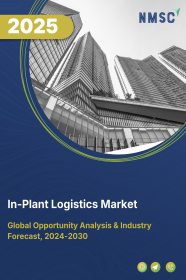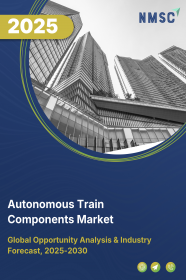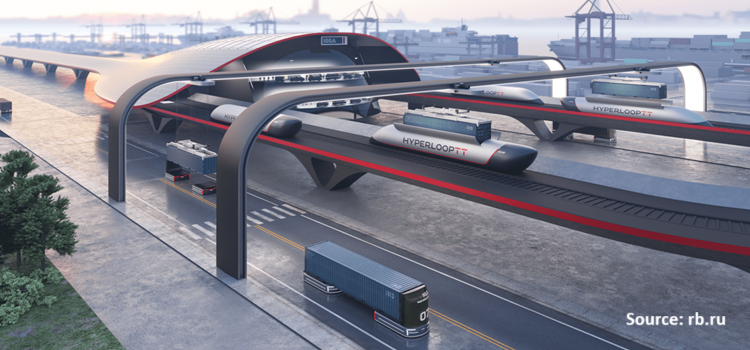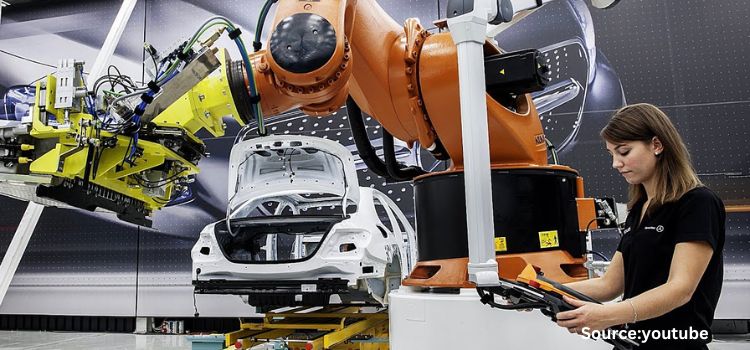
In-Plant Logistics Market by Product (Forklifts, Conveyors, Automated Guided Vehicles (AGVs), Drones, Sortation Systems, and Automated Storage & Retrieval System (ASRS)), by Application (Material Handling, Inventory Management, and Transportation), and by End-user (Automotive, Manufacturing, Food and Beverage, Pharmaceuticals, Chemicals, Electronics, and Others)– Global Opportunity Analysis and Industry Forecast, 2025-2030
US Tariff Impact on In-Plant Logistics Market
Trump Tariffs Are Reshaping Global Business
In-Plant Logistics Market Overview
The global In-Plant Logistics Market size was valued at USD 13.62 billion in 2024, and is predicted to reach USD 24.73 billion by 2030, with a CAGR of 10.4% from 2025 to 2030.
The in-plant logistics market comprises the segment of logistics industry that is committed towards planning, coordination, and execution of various tasks related to the movement, storage, and handling of materials within the manufacturing plant.
By reducing operational processes and resource utilization, these services aim to enhance efficiency, reduce expenditures, and increase overall productivity levels within the facility. These solutions not only increase operational efficiency but also improve accuracy and precision through automation. The market enables manufacturers to streamline operations, improve profitability, and maintain competitiveness within their respective industries.
Market Dynamics and Trends
The worldwide rise of the e-commerce sector is significantly driving the in-plant logistics market growth, as these solutions are crucial for managing the efficient flow of goods within fulfilment centers and distribution facilities.
International Trade Administration states that, global e-commerce market is experiencing rapid expansion, with B2B transactions projected to reach USD 36 trillion by 2026, and B2C revenues expected to hit USD 5.5 trillion by 2027. Such expansion of e-commerce drives the demand for advanced logistics solutions to meet the fast-paced and dynamic requirements of the manufacturing capabilities.
Moreover, the global expansion of the automotive industry is driving the growth of the in-plant logistics sector, as these logistics solutions are essential for optimizing material flow and enhancing productivity in automotive production units.
As per, Association of European Automobile Manufacturers, 85.4 million units motor vehicle were produced worldwide in 2022, and this recorded a 5.7% increase from 2021. With such increase in automotive production, demand for advanced technologies such as in transit logistics to handle assembly line operations are also increasing.
Furthermore, industry 4.0 initiatives marked by the integration of digital technologies is further driving the growth of in-plant logistics market. The adoption of technologies such as IoT, AI, and automation is changing traditional manufacturing units into smart factories.
Integration of industry 4.0 principles into these systems enhances internal transit through real-time data insights and automated decision making. These advancements not only improve operational efficiency but also enable predictive maintenance, reduce downtime, and support the overall production process.
However, the significant upfront investment required for implementing advanced in-plant logistics systems ranging from technology, equipment, and infrastructure restraints the growth of the market.
On the contrary, adoption of smart warehouse solutions, including RFID (Radio Frequency Identification) technology and WMS (Warehouse Management System) is anticipated to create ample growth opportunity in the forthcoming years. These technologies facilitate seamless integration with supply chain partners, improve customer service with faster order fulfilment, enable data-driven decision-making, and offer scalability to accommodate business growth effectively.
Market Segmentations and Scope of the Study
The in-plant logistics market report is segmented on the basis of product, application, end user, and region. On the basis of product, the market is divided into forklifts, conveyors, automated guided vehicles (AGVs), drones, sortation systems, and automated storage & retrieval system (ASRS). Based on application, the market is categorised into material handling, inventory management, and transportation. Based on end-user, the market is segmented into automotive, manufacturing, food and beverage, pharmaceuticals, chemicals, electronics, and others. Regional breakdown and analysis of each of the aforesaid segments includes regions comprising of North America, Europe, Asia-Pacific, and Rest of the World (Row).
Geographical Analysis
Asia-Pacific dominates the in-plant logistics market share during the forecast period due to rapid growth of industrialization within the region. As industries continue to expand, there is an increasing demand for efficient internal logistics solutions to support production processes by ensuring timely delivery of materials, optimizing workflow, and minimizing downtime.
For instance, in China, industrial added value showed a notable year-on-year increase of 6.8% in 2023 and added value of large-scale industries exceeded 4.6% compared to 2021.This robust industrial growth boosts the demand for advanced logistics systems to meet the distinct logistical needs of industrial settings.
Moreover, the rapid growth of automotive sector in this region creates demand for advanced logistic solutions to manage the operational tasks within the manufacturing unit efficiently.
According to the latest report published by the International Trade Administration, China is leading the world’s vehicle market by both annual sales and manufacturing output and its domestic production is expected to reach 35 million vehicles by 2025. Such expansion of the automotive production increases demand for advanced technologies such as in-plant logistics to handle assembly line operations efficiently.
On the other hand, North America is expected to show a steady rise in the in-plant logistics market demand due to the expansion of pharmaceuticals industry in this region. Internal logistics solutions are used across this sector to handle increased production volumes, ensure safety, and comply with stringent regulatory standards.
According to European Federation of Pharmaceutical Industries and Association, in 2022 North America accounted for 52.3% of world pharmaceutical sales. Such high sales rate requires internal logistics within the industry to streamline management processes and maintain product quality and safety.
Moreover, the rising chemical manufacturing industry in this region to support the production and distribution of chemical products efficiently drives the in-plant logistics market expansion in this region.
As stated by the Government of the U.S., the country exported about USD 288.0 billion of chemicals across the globe in 2022. Such growth in the chemical manufacturing industries, driven by the global demand for various chemicals, drives the growing adoption of internal logistics solutions, thereby driving the growth of the market.
Competitive Landscape
Various key players operating in the in-plant logistics industry include KION Group AG, Hyster-Yale Group, Inc., Toyota Industries Corporation, BEUMER Group GmbH & Co. KG, Daifuku Co., Ltd., Honeywell International Inc., JBT Corporation, KUKA AG, Mahindra Logistics, Murata Machinery, SSI Schaefer, Godrej Enterprise, OWM Logistics, Linde Material Handling, Jungheinrich AG among others. These market players are adopting various strategies such as partnership and acquisition to remain dominant in the market.
For instance, in May 2023, BEUMER Group acquired U.S. based Hendrik Group Inc. This acquisition aims to enhance BEUMER's capabilities in providing innovative in-plant logistics solutions, particularly for manufacturing plants in the cement and mining industries.
Moreover, in May 2023, SSI SCHAEFER partnered with Brands for Less and launched advanced automated roaming shuttle in Dubai. This product is integrated with VNA selective storage and automated bin storage, that enhances warehouse efficiency by optimizing storage space and reducing operational costs.
Furthermore, in April 2023, Honeywell International Inc. acquired Compressor Controls Corporation. The acquisition aimed to offer enhanced asset performance management capability across industries by providing advanced in-plant logistics to improve the reliability and efficiency of internal processes by ensuring smoother operations.
Key Benefits
-
The report provides quantitative analysis and estimations of the in-plant logistics market from 2024 to 2030, which assists in identifying the prevailing market opportunities.
-
The study comprises a deep-dive analysis of the current and future in-plant logistics market trends to depict prevalent investment pockets in the market.
-
Information related to key drivers, restraints, and opportunities and their impact on the in-plant logistics market is provided in the report.
-
Competitive analysis of the players, along with their market share is provided in the report.
-
SWOT analysis and Porters Five Forces model is elaborated in the study.
-
Value chain analysis in the market study provides a clear picture of roles of stakeholders.
In-Plant Logistics Market Key Segments
By Type
-
Forklifts
-
Conveyors
-
Automated Guided Vehicles (AGVs)
-
Drones
-
Sortation Systems
-
Automated Storage and Retrieval System (ASRS)
By Application
-
Material Handling
-
Inventory Management
-
Transportation
By End-User
-
Automotive
-
Manufacturing
-
Food and Beverage
-
Pharmaceuticals
-
Chemicals
-
Electronics
-
Others
By Region
-
North America
-
The U.S.
-
Canada
-
Mexico
-
-
Europe
-
The U.K.
-
Germany
-
France
-
Italy
-
Spain
-
Denmark
-
Netherlands
-
Finland
-
Sweden
-
Norway
-
Russia
-
Rest of Europe
-
-
Asia-Pacific
-
China
-
Japan
-
India
-
South Korea
-
Australia
-
Indonesia
-
Singapore
-
Taiwan
-
Thailand
-
Rest of Asia-Pacific
-
-
Rest of the World (RoW)
-
Latin America
-
Middle East
-
Africa
-
Key Players
-
KION GROUP AG
-
Hyster-Yale Group, Inc.
-
Toyota Industries Corporation
-
BEUMER Group GmbH & Co. KG
-
Daifuku Co., Ltd.
-
Honeywell International Inc.
-
JBT Corporation
-
KUKA AG
-
Mahindra Logistics
-
Murata Machinery
-
SSI Schaefer
-
Godrej Enterprise
-
OWM Logistics
-
Linde Material Handling
-
Jungheinrich AG
REPORT SCOPE AND SEGMENTATION:
|
Parameters |
Details |
|
Market Size in 2024 |
USD 13.62 billion |
|
Revenue Forecast in 2030 |
USD 24.73 billion |
|
Growth Rate |
CAGR of 10.4% 2025 to 2030 |
|
Analysis Period |
2024–2030 |
|
Base Year Considered |
2024 |
|
Forecast Period |
2025–2030 |
|
Market Size Estimation |
Billion (USD) |
|
Growth Factors |
|
|
Countries Covered |
28 |
|
Companies Profiled |
15 |
|
Market Share |
Available for 15 companies |
|
Customization Scope |
Free customization (equivalent to up to 80 working hours of analysts) after purchase. Addition or alteration to country, regional, and segment scope. |
|
Pricing and Purchase Options |
Avail customized purchase options to meet your exact research needs. |

















 Speak to Our Analyst
Speak to Our Analyst





















